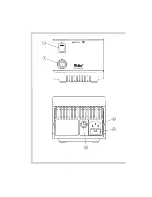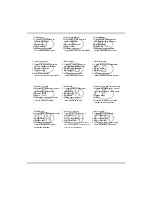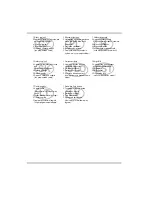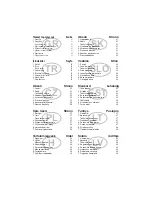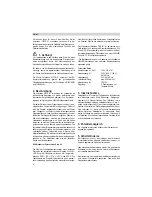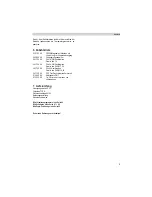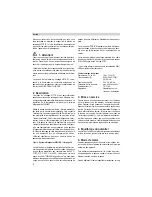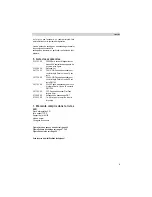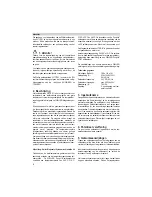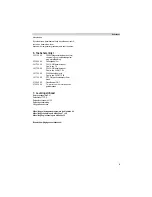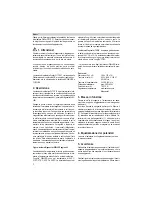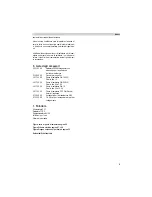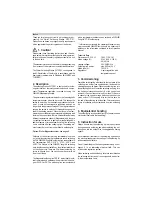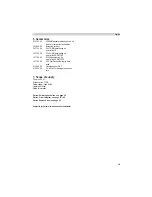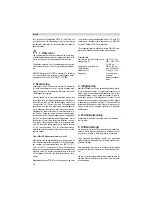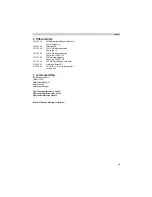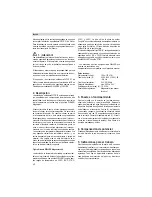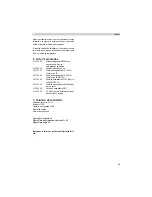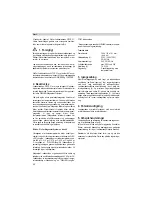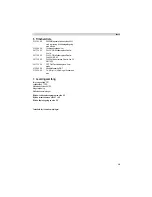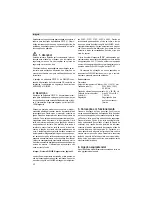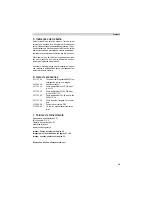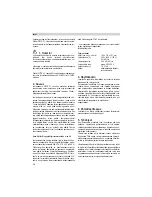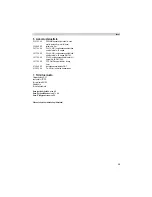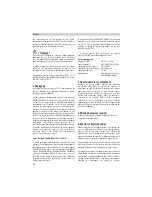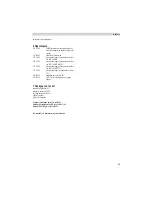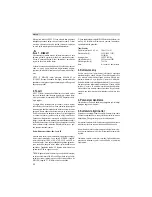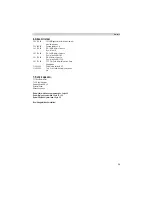
English
Thank you for placing your trust in our company by pur-
chasing the Weller Soldering Station WTCP 51.
Production was based on stringent quality requirements
which guarantee the perfect operation of the device.
1. Caution!
Please read these Operating Instructions and the atta-
ched safety information carefully prior to initial operation.
Failure to observe the safety regulations results in a risk
to life and limb.
The manufacturer shall not be liable for damage resulting
from misuse of the machine or unauthorised alterations.
The Weller Soldering Station WTCP 51 corresponds to
the EC Declaration of Conformity in accordance with the
basic safety requirements of Directives 89/336/EEC and
73/23EEC.
2. Description
The soldering Station WTCP 51 is best suited for solde-
ring electrically or thermally sensitive electronic compo-
nents. Temperature regulation is carried out using the
WELLER Magnastat principle.
The permanent magnet is attracted to the ferromagnetic
temperature sensor when the tip is cold. This causes the
switch to switch on. As the sensor approaches the Curie-
point, it loses its ferromagnetic properties and can no
longer hold the permanent magnet. The magnet releases
causing the switch to switch off, thereby interrupting the
feed to the heating element. When the tip cools, the tem-
perature sensor attracts the permanent magnet again and
restores the current feed. There is little deviation between
different temperature sensors (Magnestats) and they are
not subject to wear due to ageing or material fatigue. An
addition feature of this arrangement is that the soldering
iron is switched off when changing tips. The heating ele-
ment cannot burn out from use without a soldering tip.
Picture: Weller Magnastat system, see page 49
Selection of the correct working temperature is carried
out by simply selecting the temperature coded soldering
tip. The WELLER "Longlife" soldering tips are available in
the temperatures 260°C, 310°C, 370°C, 425°C and
480°C. The lifetime of the WELLER "Longlife" soldering
tip is lengthened substantially by the electroplated finish
on the copper core. There are 22 different soldering tip
forms to choose from. You can choose the optimal tip
from one of these.
The Magnastat soldering iron TCP-S* is electrically isola-
ted from mains and operates with a protective low volta-
ge of 24V AC or DC. The soldering iron comes standard
with a temperature resistant silicon cord and a WELLER
"Longlife" PT-B7 soldering tip.
* Information contained in the Operation Manuals of any
other connected WELLER tools should be observed in
addition to the information contained in this Operation
Manual.
Technical Data
Dimensions L X W X H:
166 X 115 X 101
Mains voltage (3):
230 V (240 V, 120 V)
50 (60) Hz
Heating voltage:
24 V 50(60) Hz
Soldering iron power:
max. 50 W at 24 V
Mains fuse (4).
T0.315 A
Regulation:
2-point regulation with
temperature sensor
3. Commissioning
Fasten the holder spring with funnel to the foot plate of the
soldering iron holder (see exploded view) and soak the
cleaning sponge with water. Place the soldering iron into
the safety support rack. Insert the soldering iron plug into
the 3-channel connection socket (2) of the control unit
and lock it. Connect the control unit to mains (3). Be sure
to check for the correct voltage. Switch on the unit at the
mains switch (1). When using a tip for the first time, tin
the end of the soldering tip with solder. This removes any
layers of oxidation and contaminants from the soldering
tip.
4. Equipotential bonding
The soldering tip is connected directly to the mains earth
via the electrical cable (hard earthing).
5. Instruction for use
Always be sure that the soldering tip is properly tinned
during pauses in soldering and when replacing the sol-
dering iron into the holder. Don’t use aggressive fluxing
agents.
Any mechanical treatment of the soldering tip destroys
the electro-plated protective coating of the soldering tip
and decreases its lifetime.
Do not immediately run the heating element along iron or
expose it to an alternating electrical field. This can
influence the regulation system.
When soldering and desoldering, take into consideration
the soldering instructions of the components, particular-
ly their temperature limits.
Summary of Contents for WTCP 51
Page 2: ......
Page 7: ...7 WTCP 51 ...
Page 54: ...47 Circuit diagram ...
Page 57: ...50 Explo Drawing ...

